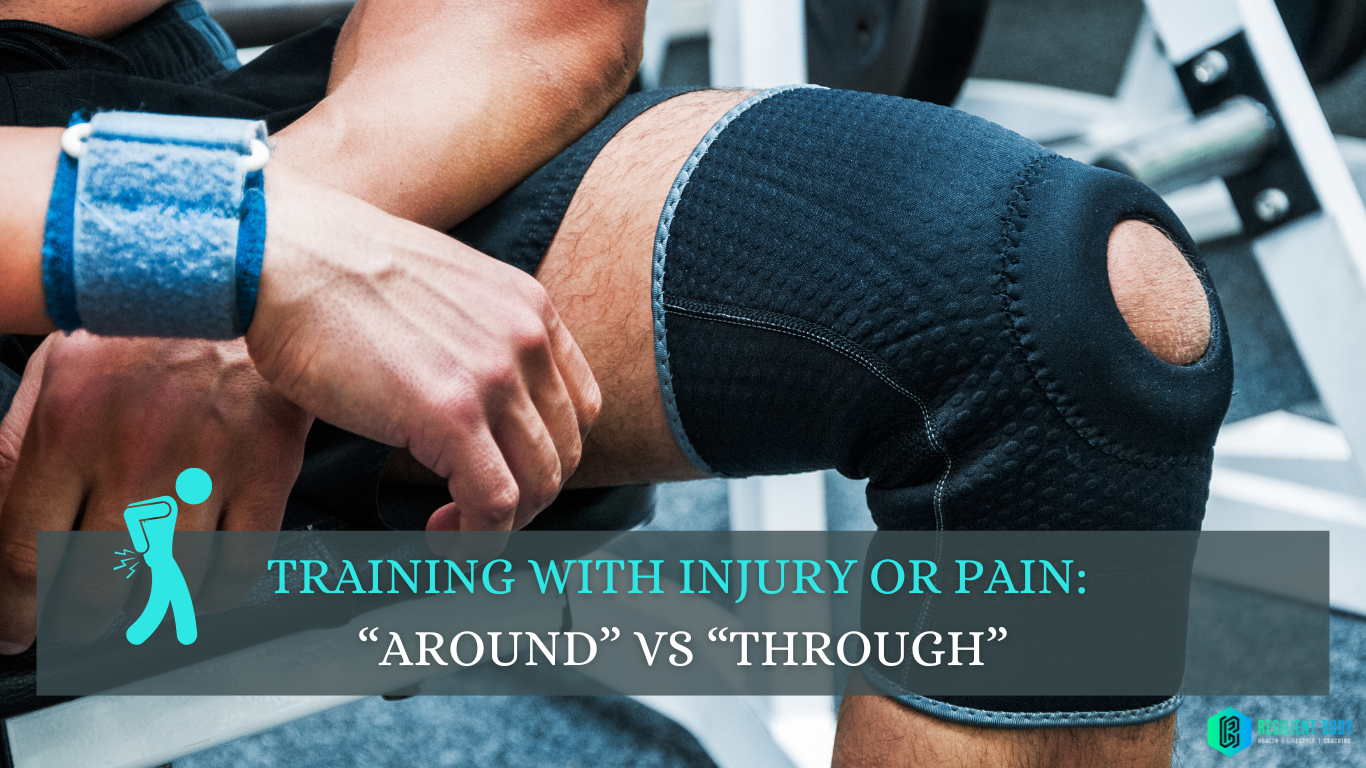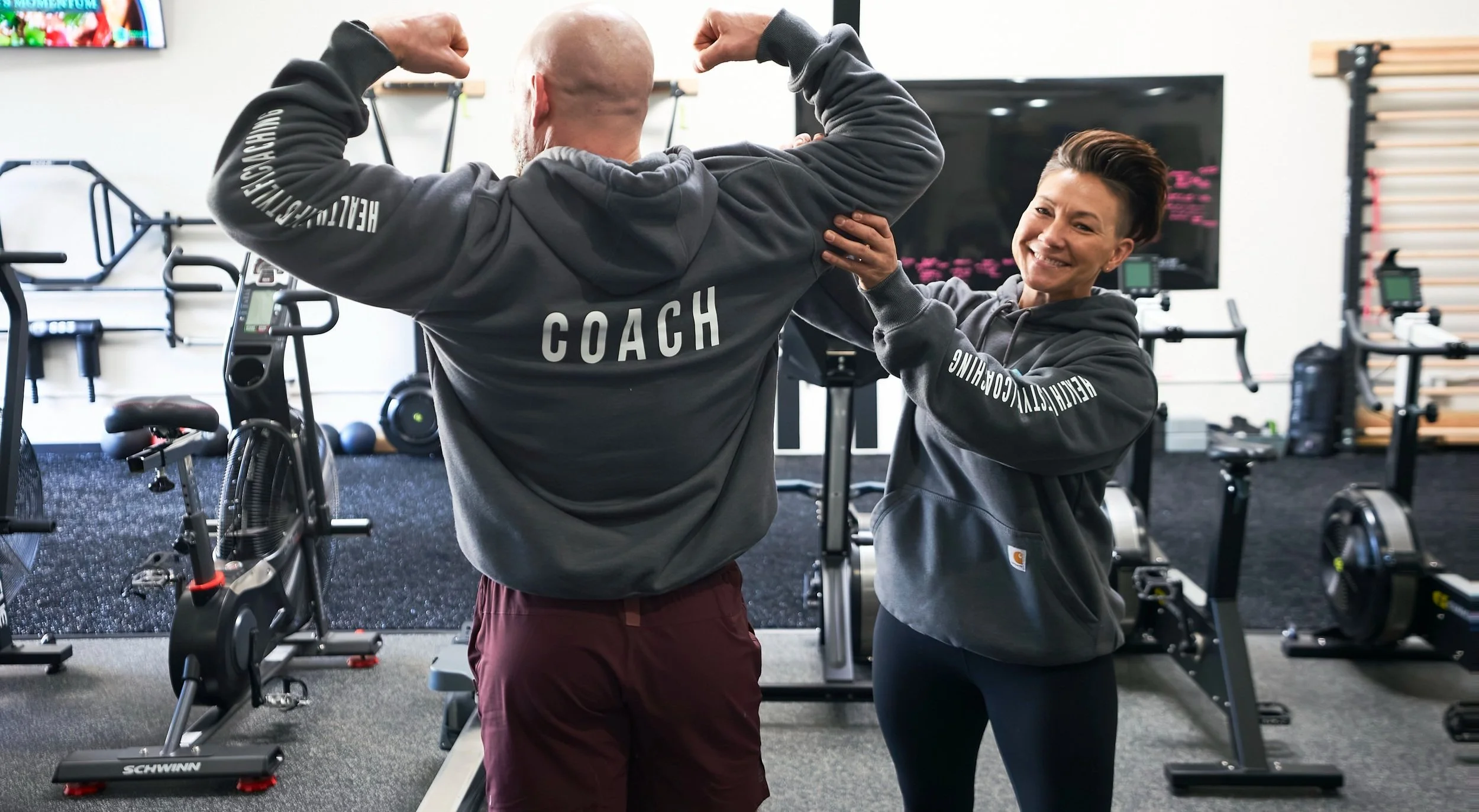Training With Injury or Pain: “Around” vs “Through”
In our world of training and coaching, one thing we know for sure is this: injuries and pain happen. Whether it's a nagging shoulder, a tweaked low back, or an old knee flare-up, setbacks are part of the game when you’re pushing to get stronger, move better, or just live actively. The real question isn’t “will I deal with injury or pain at some point?” — it’s “how do I respond when I do?”
That’s where we come in.
Rehab, Movement, and Our Role
While we absolutely lean on a trusted network of doctors, physical therapists, and specialists in our area when needed, the reality is, we often serve as the bridge between clinical rehab and real-world movement. In fact, many of our new clients find us because they're dealing with an injury or persistent pain and are looking for someone to help them move forward safely and intelligently.
We’re deeply committed to that.
And truthfully, few things chap us more than hearing that someone was told to completely avoid movement by a medical professional — often with no real plan, no clear path forward, and based on outdated understandings of human physiology. A sedentary lifestyle as a prescription? Come on. We can do better.
We believe in creating a gameplan for progression — a roadmap to rebuild, adapt, and come out the other side even stronger. Pain and injury don’t have to be permanent roadblocks; they can be invitations to retool, refocus, and level up in different ways.
Pain and Injury Are Part of the Process
Now, let’s be clear — not all pain or injury is avoidable, no matter how smart your training is. But there’s a lot you can do to hedge your bets and build a more robust, resilient body.
And when injury or pain does pop up, we’ve found that people usually have two options:
Train around it
Train through it
Let’s break those down.
Training “Around” the Pain or Injury
This approach means we're intentionally avoiding the specific movement or exercise that aggravates the issue, but still finding ways to get after it. The key is maintaining the spirit of the movement or goal — without aggravating the injury.
Think of it like a detour — you’re still getting to your destination, just via a different route.
Examples of training around:
Swapping barbell back squats (if painful) for belt squats, leg presses, or step-ups that don’t provoke the issue.
Avoiding overhead pressing while still training horizontal pressing or at an angle (e.g. push-ups, machine presses,, landmine).
Replacing running on concrete with elliptical, cycling or gravel/dirt running if joint impact is a concern.
Skipping painful hinge work and instead focusing on core and single-leg work, or using machines that feel more tolerable.
Doubling down on areas of focus not impacted by the injury (e.g. grip work, cardio, upper body if the lower body’s out of commission, etc.).
Sometimes, we temporarily remove a movement category entirely — and that’s okay. The bigger picture is still in motion.
Training “Through” with a Smart Gameplan
This is about continuing to train the movement or the area involved — but with some important modifications. Here, we’re managing discomfort (within reason) and allowing time, attention, and careful adjustment to do their thing.
A helpful tool we use is a 0-10 pain scale:
10 = passed out, left your body, saw a white light.
1 = barely a whisper, just a “huh, I feel something.”
We aim to keep you at or below a 3, give or take, depending on the injury and your unique tolerance. This is a level of discomfort that might be noticeable but not threatening or limiting your ability to move well.
Ways we help people train through pain:
Modifying range of motion (e.g. half-depth squats instead of full depth).
Adjusting positioning or joint angles (changing grip width, stance, or bar position).
Using unilateral variations to reduce load and increase control.
Swapping to machines or tools that offer more joint support or feedback.
Changing surfaces (e.g. track vs road, turf vs rubber).
Lowering load, volume, or intensity temporarily to stay within a safe zone.
Playing with frequency — sometimes less is more during recovery.
Incorporating skill-focused variants (like a paused kettlebell deadlift with no straps to reduce load and sharpen form).
Using tempo work or self-limiting exercises to stay dialed in and reduce the chance of overdoing it.
The goal here is to keep moving while respecting your limits — and sometimes, that’s where the biggest growth (both mental and physical) happens.
Movement as Medicine (Seriously)
Staying active — in some way — is one of the most powerful things you can do while working through injury or pain. Movement:
Modulates pain signals.
Boosts mood and outlook (a huge factor during rehab).
Keeps you conditioned and resilient.
Helps maintain a sense of progress and control.
We’re big believers in helping you move in ways that feel safe, effective, and empowering — even when things aren’t perfect. Because they rarely are.
Final Thoughts: Don’t Stop Moving
If you’re dealing with an injury or some nagging pain, don’t assume you’re benched. There’s almost always something you can do, and often, there’s even more you should do. Whether it’s training around the issue or working carefully through it, the key is to have a plan — and the right support.
Our coaches have helped countless clients (and ourselves, when we get tweaked!) navigate these kinds of setbacks. With the right guidance, you can come out stronger, smarter, and more resilient than before.
So if you're hurting a bit, let’s figure it out together.
Keep training. Stay moving. You’ve got this. 💪
📣 Quick Announcements:
💥 Come join our small semi-private group class our come in for some individual attention with personal training to get in your best shape this summer.
🧠 Curious about personal training? DM us, set up a consult, or ask in person—we’ll guide you through.
Marcin is back for now with some availability in the weeks ahead. If you have some unresolved issues and haven’t experienced his expert hands in conjunction with a good movement routine, see what he can do to help.
Need help building a plan that works for you? Reach out — we’re here to help you train with intention, even when things feel off





